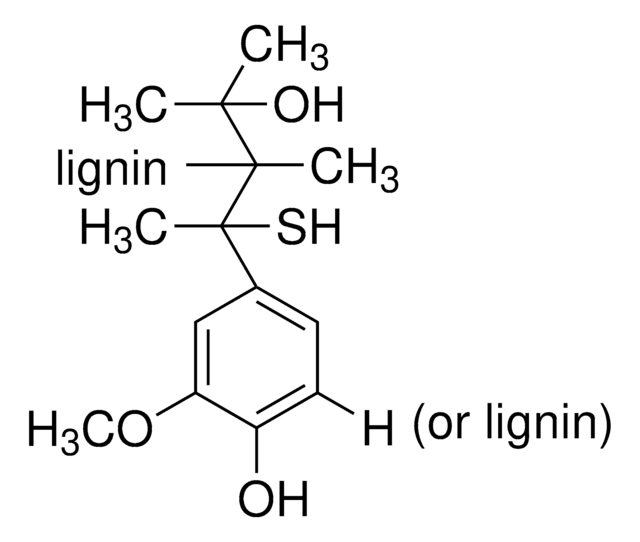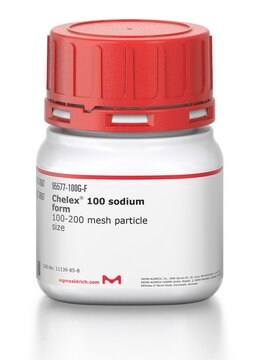Key Documents
414891
Cadmium
granular, 30-80 mesh, ≥99%
Synonim(y):
Cd
About This Item
Polecane produkty
Poziom jakości
Próba
≥99%
Postać
granular
przydatność reakcji
core: cadmium
reagent type: catalyst
rezystywność
7.27 μΩ-cm, 22°C
wielkość cząstki
30-80 mesh
tw
765 °C (lit.)
mp
320.9 °C (lit.)
gęstość
8.65 g/mL at 25 °C (lit.)
ciąg SMILES
[Cd]
InChI
1S/Cd
Klucz InChI
BDOSMKKIYDKNTQ-UHFFFAOYSA-N
Szukasz podobnych produktów? Odwiedź Przewodnik dotyczący porównywania produktów
Powiązane kategorie
Opis ogólny
- nickel-cadmium battery electrodes
- plastic, ceramic, and glass pigments
- polyvinyl chloride (PVC) stabilization against light and heat
- engineering coatings for steel and other nonferrous metals
- a component of several specialized alloys.
Zastosowanie
Hasło ostrzegawcze
Danger
Zwroty wskazujące rodzaj zagrożenia
Zwroty wskazujące środki ostrożności
Klasyfikacja zagrożeń
Acute Tox. 2 Inhalation - Aquatic Acute 1 - Aquatic Chronic 1 - Carc. 1B - Muta. 2 - Repr. 2 - STOT RE 1
Kod klasy składowania
6.1B - Non-combustible acute toxic Cat. 1 and 2 / very toxic hazardous materials
Klasa zagrożenia wodnego (WGK)
WGK 3
Temperatura zapłonu (°F)
Not applicable
Temperatura zapłonu (°C)
Not applicable
Środki ochrony indywidualnej
dust mask type N95 (US), Eyeshields, Faceshields, Gloves, type P2 (EN 143) respirator cartridges
Wybierz jedną z najnowszych wersji:
Masz już ten produkt?
Dokumenty związane z niedawno zakupionymi produktami zostały zamieszczone w Bibliotece dokumentów.
Klienci oglądali również te produkty
Nasz zespół naukowców ma doświadczenie we wszystkich obszarach badań, w tym w naukach przyrodniczych, materiałoznawstwie, syntezie chemicznej, chromatografii, analityce i wielu innych dziedzinach.
Skontaktuj się z zespołem ds. pomocy technicznej









